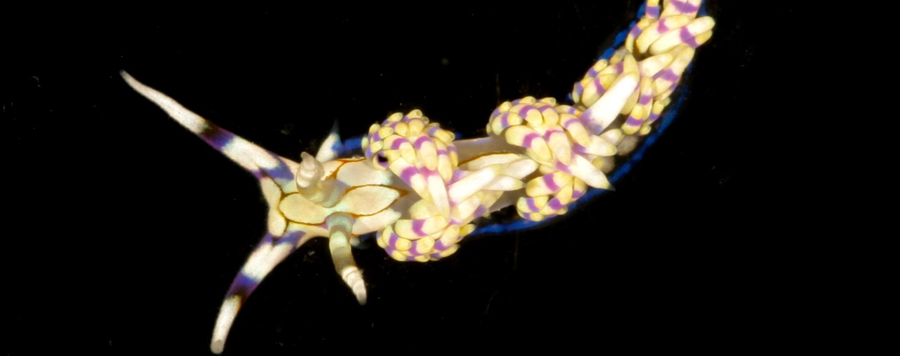
Invertebrate Pirates: Mechanism and Evolution of a Stolen Defense
Complexity is a critical aspect of metazoan biodiversity, and the origin of complex phenotypes requires the integration of co-opted and novel characters at multiple levels of biological organization (e.g., genes, tissues, behaviors). One mechanism for generating complex phenotypes is to steal extrinsically generated features of other organisms. An example of this is the multiple metazoan lineages which have evolved the ability to sequester cells and organelles from their diet. Many groups have evolved such interactions for metabolism (i.e., plastid sequestration in sea slugs or dinoflagellate symbiosis in corals), but few have done so to boost defensive capabilities, which we see in the sequestration of nematocysts from cnidarian prey. The goal of my research is to identify the critical genes, tissues, behaviors, etc. that are necessary for the sequestration of nematocysts, and determine the evolutionary steps that led to the origin of this complex phenotype. I have inferred at least two origins of the ability to sequester nematocysts within nudibranchs. In at least one of these origins, I uncovered evidence for coevolutionary changes between the preference for specific prey types and changes to key morphological features in the cnidosac structure. However, the processes underlying nematocyst recognition, phagocytosis, and long-term stability of sequestered nematocysts in any sequestering organism are unknown. To address this gap, my research now also seeks to uncover the mechanisms of nematocyst sequestration in an emerging gastropod model species, Berghia stephanieae. Using traditional histological methods and antibody staining, I have identified key features of the cnidosac. With new genomic resources for this species, I have also identified genes upregulated in the cnidosac, including those that may be associated with the instigation of phagocytosis in cnidophage cells. These results provide a starting point for reconstructing the evolutionary history of the genes, proteins, and cell types necessary for this process. Ultimately, these complementary investigations into the sequestration of extrinsically produced structures will also provide important insights into how complex phenotypes have led to the fantastic biodiversity we see today.





